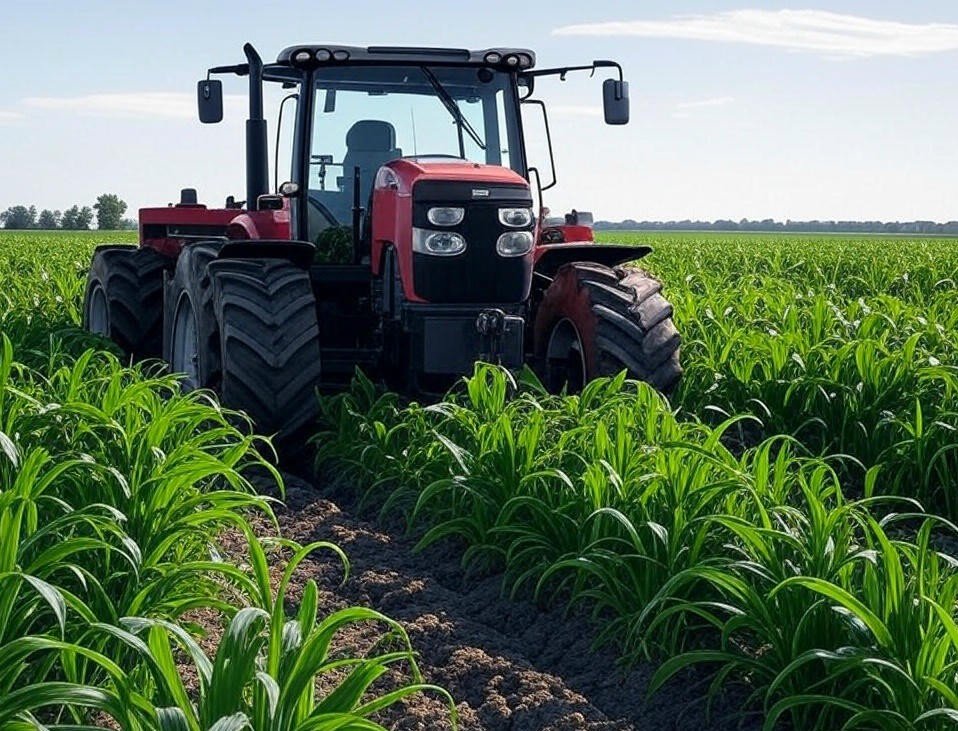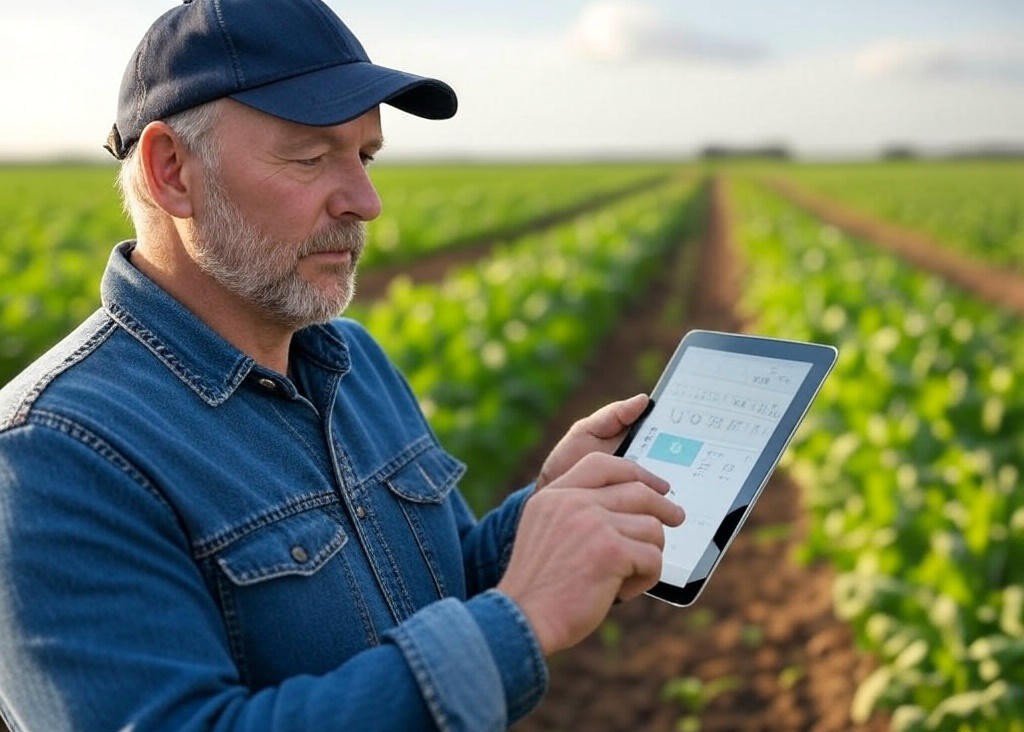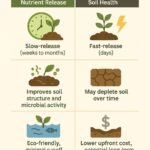
Agriculture has come a long way from traditional plows and manual labor. Today, smart farming technologies are transforming Western agriculture, enabling farmers to boost productivity, save resources, and adapt to climate challenges. In countries like the USA, UK, and Canada, these innovations are not just trends—they’re game-changers. By leveraging data-driven tools, artificial intelligence (AI), and automation, farmers are redefining how food is grown. This blog post dives into the top smart farming technologies shaping 2025, their benefits, challenges, and what lies ahead for Western agriculture.
What is Smart Farming?
Smart farming, also known as precision agriculture, uses advanced technologies to optimize farming practices. Unlike traditional farming, which relies heavily on manual processes and generalized methods, smart farming technologies integrate data, sensors, AI, and automation to make agriculture more efficient and sustainable. For instance, real-time monitoring of soil conditions or weather patterns helps farmers make informed decisions, reducing waste and boosting yields.
The core difference lies in precision. Traditional farming applies uniform inputs across fields, while smart farming tailors actions to specific areas, using tools like IoT sensors and drones. As a result, farmers can address issues like nutrient deficiencies or pest outbreaks with pinpoint accuracy, making farming smarter and more sustainable.
Benefits of Smart Farming Technologies
Smart farming technologies offer a range of benefits that are revolutionizing Western agriculture. Here’s why they’re making waves:
- Higher Yields: Precision tools like AI and drones optimize planting and harvesting, increasing crop yields by up to 70% in some cases, as seen with CropX’s soil health solutions.
- Cost and Resource Efficiency: Technologies like variable rate technology (VRT) reduce fertilizer use by up to 60% and pesticide use by 80%, cutting costs significantly.
- Climate-Smart Practices: Smart irrigation and soil sensors help conserve water, addressing drought challenges, especially in regions like California.
- Improved Decision-Making: Data analytics from IoT devices and AI provide real-time insights, enabling farmers to act proactively rather than reactively.
These benefits translate into both economic gains and environmental sustainability, making smart farming a cornerstone of modern agriculture.
Top Smart Farming Technologies in Use (2025 Update)
In 2025, smart farming technologies are at the forefront of agricultural innovation. Let’s explore the top tools driving this transformation.
IoT-Based Soil and Weather Sensors
IoT-based sensors monitor soil moisture, nutrient levels, and weather conditions in real time, providing farmers with actionable data. For example, smart soil probes in California vineyards use sensors to optimize irrigation, reducing water usage by 57%. These sensors send alerts to farmers’ smartphones, ensuring timely interventions. Companies like Prospera Technologies offer AI-based sensors that integrate seamlessly with farm management systems.
Drones for Crop Monitoring and Spraying

Drones equipped with multispectral sensors and AI capabilities are transforming crop monitoring. In the UK, wheat farmers use drones to capture aerial imagery, detecting pest infestations and nutrient deficiencies early. These drones also enable precision spraying, reducing pesticide use by up to 80%. In 2025, drones with advanced AI are expected to dominate, with a market growth projected at 13.9% CAGR.
AI-Powered Crop Forecasting
AI and machine learning predict crop diseases, yields, and optimal harvest times. In Canadian greenhouse farms, AI tools analyze data from sensors and satellite imagery to forecast yields with high accuracy, improving planning and reducing waste. These systems help farmers anticipate issues like blight, enabling targeted treatments that save crops and resources.
Robotics and Automation in Farming
Robotic weeders and autonomous tractors are addressing labor shortages in Western agriculture. For instance, the LaserWeeder by Carbon Robotics eliminates 5,000 weeds per minute with 99% accuracy, cutting weed control costs by 80%. In China, fully autonomous tractors like the Honghu T70 handle plowing to harvesting, a trend gaining traction in the USA and Canada.
Smart Irrigation Systems
Smart irrigation systems use soil moisture data to automate water delivery, saving up to 8% of water in drought-prone areas. In the USA, systems like those from Agrible optimize water use in corn fields, ensuring crops get exactly what they need without waste. These systems are critical in regions facing water scarcity, promoting sustainable farming.
| Technology | Key Function | Example Use Case | Impact (2025) |
|---|---|---|---|
| IoT Sensors | Real-time soil/weather monitoring | California vineyards | 57% less water use |
| Drones | Aerial imagery, precision spraying | UK wheat farms | 80% less pesticide use |
| AI Forecasting | Disease and yield prediction | Canadian greenhouses | Higher yield accuracy |
| Robotics | Automated weeding, harvesting | USA robotic weeders | 80% lower weed control costs |
| Smart Irrigation | Automated water delivery | USA corn fields | 8% water savings |
Regional Insights: Smart Farming in the UK, USA, and Canada
Smart farming technologies vary by region, driven by local needs and government support:
- USA: Leads in IoT sensors and smart irrigation, especially in water-scarce states like California. The USDA provides nearly $200 million in funding for precision agriculture (2017–2021), but only 27% of farms used these technologies by 2023.
- UK: Drones and AI are popular for monitoring wheat and barley crops. DEFRA’s subsidies encourage adoption, though rural connectivity remains a challenge.
- Canada: AI-powered greenhouses and robotic systems are gaining traction. Farmers Edge Inc. partnered with Taurus Ag in 2025 to expand soil testing, supported by government initiatives like Agriculture Canada’s innovation programs.
Government subsidies, such as the USDA’s financial assistance and DEFRA’s grants, are crucial for adoption, but challenges like high costs and connectivity gaps persist.
Challenges and Limitations
Despite their promise, smart farming technologies face hurdles:
- High Initial Investment: Technologies like drones and robotics require significant upfront costs, a barrier for small farms.
- Connectivity Issues: Rural areas in the UK and Canada often lack reliable internet, hindering IoT and drone operations.
- Data Privacy: Farmers worry about data ownership and sharing, especially with large agribusinesses.
- Training Needs: Many farmers lack the technical skills to use AI or IoT tools, and accessible training is limited.
Addressing these challenges requires policy support, affordable solutions, and better digital infrastructure.
The Future of Smart Farming Technologies

The future of smart farming technologies is bright, with innovations poised to reshape Western agriculture by 2030:
- 5G and Satellite Mapping: 5G will enhance IoT connectivity, enabling real-time data transmission in remote areas. Low Earth Orbit (LEO) satellites could add $500 billion to global agricultural GDP by improving connectivity.
- Blockchain for Traceability: Blockchain will ensure transparent food supply chains, boosting consumer trust and market access.
- Vision for 2030: Over 60% of global farms are expected to adopt digital soil monitoring, with AI and robotics driving a 28% GDP boost in low- and middle-income countries.
These advancements will make farming more efficient, sustainable, and resilient.
Frequently Asked Questions (FAQs)
What are examples of smart farming technologies?
Examples of smart farming tools include IoT soil sensors, drones for crop monitoring, AI-powered forecasting, robotic weeders, and smart irrigation systems. These technologies optimize farming tasks, from planting to harvesting, with precision and efficiency.
How does smart farming help reduce costs?
Smart farming benefits include reduced input costs through precise application of water, fertilizers, and pesticides. For instance, variable rate technology cuts fertilizer use by up to 60%, and drones reduce pesticide costs by 80%, saving farmers money.
Is smart farming sustainable?
Sustainable smart farming reduces environmental impact by minimizing water and chemical use. Technologies like smart irrigation save 8% of water, and AI-driven pest control lowers pesticide use, supporting eco-friendly practices.
Related Resources & Case Studies
- USDA Office of Urban Agriculture and Innovative Production – United States Department of Agriculture
- DEFRA Farming Innovation Programme – UK Department for Environment, Food & Rural Affairs
- Agriculture and Agri-Food Canada: Canadian Agricultural Partnership – Government of Canada
- Smart Farming Technologies Transforming UK Agriculture – Agro Reality
- Top 10 Smart Farming Technologies – Agro Reality
Conclusion
Smart farming technologies are revolutionizing Western agriculture, offering higher yields, cost savings, and sustainable practices. From IoT sensors to AI-powered forecasting, these tools empower farmers in the USA, UK, and Canada to meet growing food demands while tackling climate challenges. Despite hurdles like high costs and connectivity issues, government support and future innovations like 5G and blockchain promise a bright future. Want more updates on smart farming innovations? Subscribe to Agro Reality!
